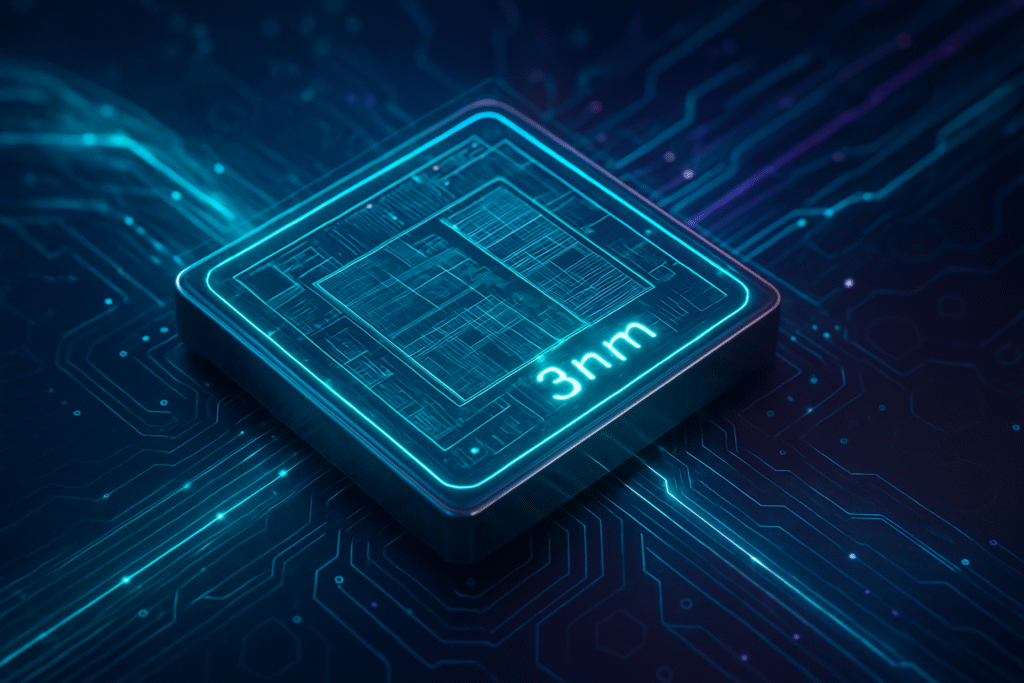
The cryptocurrency mining industry is buzzing with the recent announcement from Chain Reaction regarding its EL3CTRUM E31, a new suite of Bitcoin miners poised to redefine the benchmarks for energy efficiency and operational flexibility. This launch, centered around the groundbreaking EL3CTRUM A31 ASIC (Application-Specific Integrated Circuit), signifies a pivotal moment for large-scale mining operations, promising to significantly reduce operational costs and enhance profitability in an increasingly competitive landscape. With its cutting-edge 3nm process node technology, the EL3CTRUM E31 is not just an incremental upgrade but a generational leap, setting new standards for power efficiency and adaptability in the relentless pursuit of Bitcoin.
The immediate significance of the EL3CTRUM E31 lies in its bold claim of delivering "sub-10 Joules per Terahash (J/TH)" efficiency, a metric that directly translates to lower electricity consumption per unit of computational power. This level of efficiency is critical as the global energy market remains volatile and environmental scrutiny on Bitcoin mining intensifies. Beyond raw power, the EL3CTRUM E31 emphasizes modularity, allowing miners to customize their infrastructure from the chip level up, and integrates advanced features like power curtailment and remote management. These innovations are designed to provide miners with unprecedented control and responsiveness to dynamic power markets, making the EL3CTRUM E31 a frontrunner in the race for sustainable and profitable Bitcoin production.
Unpacking the Technical Marvel: The EL3CTRUM E31's Core Innovations
At the heart of Chain Reaction's EL3CTRUM E31 system is the EL3CTRUM A31 ASIC, fabricated using an advanced 3nm process node. This miniaturization of transistor size is the primary driver behind its superior performance and energy efficiency. While samples are anticipated in May 2026 and volume shipments in Q3 2026, the projected specifications are already turning heads.
The EL3CTRUM E31 is offered in various configurations to suit diverse operational needs and cooling infrastructures:
- EL3CTRUM E31 Air: Offers a hash rate of 310 TH/s with 3472 W power consumption, achieving an efficiency of 11.2 J/TH.
- EL3CTRUM E31 Hydro: Designed for liquid cooling, it boasts an impressive 880 TH/s hash rate at 8712 W, delivering a remarkable 9.9 J/TH efficiency.
- EL3CTRUM E31 Immersion: Provides 396 TH/s at 4356 W, with an efficiency of 11.0 J/TH.
The specialized ASICs are custom-designed for the SHA-256 algorithm used by Bitcoin, allowing them to perform this specific task with vastly greater efficiency than general-purpose CPUs or GPUs. Chain Reaction's commitment to pushing these boundaries is further evidenced by their active development of 2nm ASICs, promising even greater efficiencies in future iterations. This modular architecture, offering standalone A31 ASIC chips, H31 hashboards, and complete E31 units, empowers miners to optimize their systems for maximum scalability and a lower total cost of ownership. This flexibility stands in stark contrast to previous generations of more rigid, integrated mining units, allowing for tailored solutions based on regional power strategies, climate conditions, and existing facility infrastructure.
Industry Ripples: Impact on Companies and Competitive Landscape
The introduction of the EL3CTRUM E31 is set to create significant ripples across the Bitcoin mining industry, benefiting some while presenting formidable challenges to others. Chain Reaction, as the innovator behind this advanced technology, is positioned for substantial growth, leveraging its cutting-edge 3nm ASIC design and a robust supply chain.
Several key players stand to benefit directly from this development. Core Scientific (NASDAQ: CORZ), a leading North American digital asset infrastructure provider, has a longstanding collaboration with Chain Reaction, recognizing ASIC innovation as crucial for differentiated infrastructure. This partnership allows Core Scientific to integrate EL3CTRUM technology to achieve superior efficiency and scalability. Similarly, ePIC Blockchain Technologies and BIT Mining Limited have also announced collaborations, aiming to deploy next-generation Bitcoin mining systems with industry-leading performance and low power consumption. For large-scale data center operators and industrial miners, the EL3CTRUM E31's efficiency and modularity offer a direct path to reduced operational costs and sustained profitability, especially in dynamic energy markets.
Conversely, other ASIC manufacturers, such as industry stalwarts Bitmain and Whatsminer, will face intensified competitive pressure. The EL3CTRUM E31's "sub-10 J/TH" efficiency sets a new benchmark, compelling competitors to accelerate their research and development into smaller process nodes and more efficient architectures. Manufacturers relying on older process nodes or less efficient designs risk seeing their market share diminish if they cannot match Chain Reaction's performance metrics. This launch will likely hasten the obsolescence of current and older-generation mining hardware, forcing miners to upgrade more frequently to remain competitive. The emphasis on modular and customizable solutions could also drive a shift in the market, with large operators increasingly opting for components to integrate into custom data center designs, rather than just purchasing complete, off-the-shelf units.
Wider Significance: Beyond the Mining Farm
The advancements embodied by the EL3CTRUM E31 extend far beyond the immediate confines of Bitcoin mining, signaling broader trends within the technology and semiconductor industries. The relentless pursuit of efficiency and computational power in specialized hardware design mirrors the trajectory of AI, where purpose-built chips are essential for processing massive datasets and complex algorithms. While Bitcoin ASICs are distinct from AI chips, both fields benefit from the cutting-edge semiconductor manufacturing processes (e.g., 3nm, 2nm) that are pushing the limits of performance per watt.
Intriguingly, there's a growing convergence between these sectors. Bitcoin mining companies, having established significant energy infrastructure, are increasingly exploring and even pivoting towards hosting AI and High-Performance Computing (HPC) operations. This synergy is driven by the shared need for substantial power and robust data center facilities. The expertise in managing large-scale digital infrastructure, initially developed for Bitcoin mining, is proving invaluable for the energy-intensive demands of AI, suggesting that advancements in Bitcoin mining hardware can indirectly contribute to the overall expansion of the AI sector.
However, these advancements also bring wider concerns. While the EL3CTRUM E31's efficiency reduces energy consumption per unit of hash power, the overall energy consumption of the Bitcoin network remains a significant environmental consideration. As mining becomes more profitable, miners are incentivized to deploy more powerful hardware, increasing the total hash rate and, consequently, the network's total energy demand. The rapid technological obsolescence of mining hardware also contributes to a growing e-waste problem. Furthermore, the increasing specialization and cost of ASICs contribute to the centralization of Bitcoin mining, making it harder for individual miners to compete with large farms and potentially raising concerns about the network's decentralized ethos. The semiconductor industry, meanwhile, benefits from the demand but also faces challenges from the volatile crypto market and geopolitical tensions affecting supply chains. This evolution can be compared to historical tech milestones like the shift from general-purpose CPUs to specialized GPUs for graphics, highlighting a continuous trend towards optimized hardware for specific, demanding computational tasks.
The Road Ahead: Future Developments and Expert Predictions
The future of Bitcoin mining technology, particularly concerning specialized semiconductors, promises continued rapid evolution. In the near term (1-3 years), the industry will see a sustained push towards even smaller and more efficient ASIC chips. While 3nm ASICs like the EL3CTRUM A31 are just entering the market, the development of 2nm chips is already underway, with TSMC planning manufacturing by 2025 and Chain Reaction targeting a 2nm ASIC release in 2027. These advancements, leveraging innovative technologies like Gate-All-Around Field-Effect Transistors (GAAFETs), are expected to deliver further reductions in energy consumption and increases in processing speed. The entry of major players like Intel into the custom cryptocurrency product group also signals increased competition, which is likely to drive further innovation and potentially stabilize hardware pricing. Enhanced cooling solutions, such as hydro and immersion cooling, will also become increasingly standard to manage the heat generated by these powerful chips.
Longer term (beyond 3 years), while the pursuit of miniaturization will continue, the fundamental economics of Bitcoin mining will undergo a significant shift. With the final Bitcoin projected to be mined around 2140, miners will eventually rely solely on transaction fees for revenue. This necessitates a robust fee market to incentivize miners and maintain network security. Furthermore, AI integration into mining operations is expected to deepen, optimizing power usage, hash rate performance, and overall operational efficiency. Beyond Bitcoin, the underlying technology of advanced ASICs holds potential for broader applications in High-Performance Computing (HPC) and encrypted AI computing, fields where Chain Reaction is already making strides with its "privacy-enhancing processors (3PU)."
However, significant challenges remain. The ever-increasing network hash rate and difficulty, coupled with Bitcoin halving events (which reduce block rewards), will continue to exert immense pressure on miners to constantly upgrade equipment. High energy costs, environmental concerns, and semiconductor supply chain vulnerabilities exacerbated by geopolitical tensions will also demand innovative solutions and diversified strategies. Experts predict an unrelenting focus on efficiency, a continued geographic redistribution of mining power towards regions with abundant renewable energy and supportive policies, and intensified competition driving further innovation. Bullish forecasts for Bitcoin's price in the coming years suggest continued institutional adoption and market growth, which will sustain the incentive for these technological advancements.
A Comprehensive Wrap-Up: Redefining the Mining Paradigm
Chain Reaction's launch of the EL3CTRUM E31 marks a significant milestone in the evolution of Bitcoin mining technology. By leveraging advanced 3nm specialized semiconductors, the company is not merely offering a new product but redefining the paradigm for efficiency, modularity, and operational flexibility in the industry. The "sub-10 J/TH" efficiency target, coupled with customizable configurations and intelligent management features, promises substantial cost reductions and enhanced profitability for large-scale miners.
This development underscores the critical role of specialized hardware in the cryptocurrency ecosystem and highlights the relentless pace of innovation driven by the demands of Proof-of-Work networks. It sets a new competitive bar for other ASIC manufacturers and will accelerate the obsolescence of less efficient hardware, pushing the entire industry towards more sustainable and technologically advanced solutions. While concerns around energy consumption, centralization, and e-waste persist, the EL3CTRUM E31 also demonstrates how advancements in mining hardware can intersect with and potentially benefit other high-demand computing fields like AI and HPC.
Looking ahead, the industry will witness a continued "Moore's Law" effect in mining, with 2nm and even smaller chips on the horizon, alongside a growing emphasis on renewable energy integration and AI-driven operational optimization. The strategic partnerships forged by Chain Reaction with industry leaders like Core Scientific signal a collaborative approach to innovation that will be vital in navigating the challenges of increasing network difficulty and fluctuating market conditions. The EL3CTRUM E31 is more than just a miner; it's a testament to the ongoing technological arms race that defines the digital frontier, and its long-term impact will be keenly watched by tech journalists, industry analysts, and cryptocurrency enthusiasts alike in the weeks and months to come.
This content is intended for informational purposes only and represents analysis of current AI developments.
TokenRing AI delivers enterprise-grade solutions for multi-agent AI workflow orchestration, AI-powered development tools, and seamless remote collaboration platforms.
For more information, visit https://www.tokenring.ai/.





